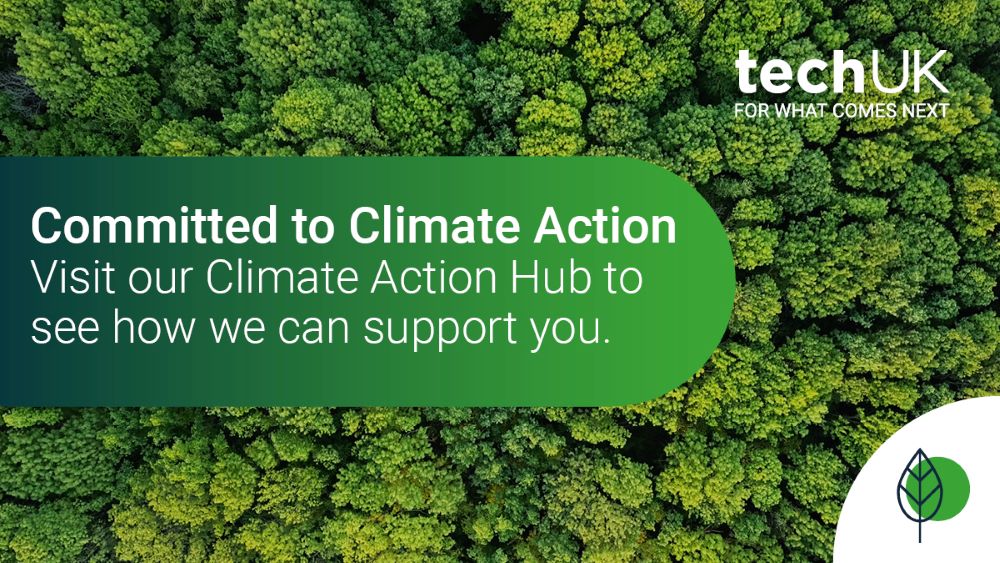Driving Cloud Sustainability with the power of AI (Guest blog from Exception)
Author: Mauricio Faoro, Cloud Engineer at Exception
AI presents an almost sky-high opportunity to enhance the sustainability of the cloud, climate and workload sustainability. For Chief Technology Officers (CTOs), it offers significant potential to make their Cloud Operating Models considerably cleaner, greener and energy-efficient.
And this potential is big: With Data Centres emitting 4%* of greenhouse gas emissions worldwide, and £8.8 million** wasted in unused cloud services every year, there is significant scope to make them more sustainable.
Leveraging AI’s versatile capabilities to improve sustainability primarily involves reducing organisations’ reliance on data centres. This strategy has the potential to make great strides in reducing the environmental impact of data storage and processing, making these functions more sustainable .
AWS, for example, has committed to carbon neutrality by 2040, powering its infrastructure with 100% renewable energy by 2025. Several AWS regions, including North Virginia, Ireland, and London are already using 100% renewable energy.
Cloud sustainability: a shared responsibility
Cloud sustainability is a shared responsibility that encourages supply chains to collaborate in optimising energy sources, utilisation and service provision. AI plays a crucial role in accelerating sustainability efforts, from minimising e-waste and monitoring carbon emissions, to enhancing water management, hardware design and architectural guidance.
Harnessing AI to drive efficiency thrives on technology teams deploying the most cost-efficient cloud computing systems as a platform to build on.
So which cloud technologies help drive sustainability?
- Graviton processors are custom-designed for workloads, such as Lambda and EC2, and are claimed to consume up to 60% less energy than comparable processors.
- Energy-efficient storage options like S3 Glacier and S3 One Zone-IA, together with serverless solutions.
- AWS provides customers with tools and resources to help manage their own sustainability goals, such as the Cloud Carbon Footprint Tool, which helps them estimate and track their carbon emissions.
How can Cloud Specialists can manage workloads more efficiently?
A key sustainable cloud solution is AWS Lambda serverless. Prioritising serverless architecture over monolithic applications so that workloads only run for an exact amount of time reduces energy wastage and processing time.
The drive towards application architecture should be serverless first, then containers and EC2 as the last model.
Other options can include:
- Choosing the AWS region based on the project requirements and regulations, but whenever possible, select an AWS region with a lower carbon footprint.
- Ensuring the application code uses optimised algorithms and that their libraries are kept updated with the latest versions.
- Making sure workloads are right-sized and use Graviton instances when possible.
- Using EC2/Fargate spot instances for fault-tolerant and flexible applications.
- Implementing horizontal auto-scaling to reduce the waste of capacity.
- Understanding SLA agreements to avoid over-provisioning of resources in situations where a failover can be managed with a cold start.
- Implementing controls and safeguards, such as Web Application Firewalls (WAFs) and Amazon GuardDuty to help prevent bots and malicious users.
- Applying lifecycle policies to S3 objects to transition them to different storage classes when they are no longer accessed frequently.
Minimising data impact, right sizing and code efficiency
Across organisations, CTOs should ensure their cloud teams optimise their cloud applications to reduce their carbon footprint. They can achieve this by right sizing, code efficiency and minimising data impact. Other routes include optional architecture patterns, responsible SLAs, technology selection, workload placement and end-user impact.
Ensuring applications’ long-term sustainability is a crucial decision. Sustainability is one of the pillars of AWS's Well-Architected Framework. The Sustainability Pillar helps organisations learn, measure and improve their workloads using environmental best practices for cloud computing.
Sophisticated AI equals enhanced cloud sustainability
As AI technologies become more sophisticated, the greater the potential for cloud infrastructure to be more scalable, accessible and automation-ready.
Developer and coding tools include:
- AWS Compute Optimizer helps avoid overprovisioning and underprovisioning
- Amazon DevOps Guru for RDS helps identify bottlenecks in relational databases, which can lead to more efficient, cost-effective and environment-friendly solutions.
- AWS Trusted Advisor recommends best practices and machine learning, advising on cost and performance optimisation to make workloads more energy efficient.
- Amazon CodeGuru can help identify vulnerabilities within codebases and performance improvements that ultimately lead to a more secure, cost-optimised and energy-efficient application.
Conclusion
To sum up, the combination of cloud technologies and AI offers the potential to establish more sustainable and environmentally-friendly cloud infrastructures.
By utilising AI's capabilities, CTOs can fine-tune resource allocation, reduce energy consumption and decrease their enterprise’s carbon footprint. This fusion can not only deliver advantages to organisations, but can help advance their overarching global aspiration of ecological sustainability.
Sources: *EY **Insight Intelligent Technology Index
Cloud Week 2023
News, views and insights on how cloud computing continues to reshape how we live and work. techUK's annual Cloud Week is an opportunity for the tech community to explore key issues in cloud and highlight new ideas and thought leadership from our members.
Cloud computing and the path to a more sustainable future
This techUK insights paper highlights the commitment of our members to a sustainable approach to cloud computing and sets out six core best practice principles for a greener future for the tech sector.
techUK - Committed to Climate Action
Visit our Climate Action Hub to learn more or to register for regular updates.
By 2030, digital technology can cut global emissions by 15%. Cloud computing, 5G, AI and IoT have the potential to support dramatic reductions in carbon emissions in sectors such as transport, agriculture, and manufacturing. techUK is working to foster the right policy framework and leadership so we can all play our part. For more information on how techUK can support you, please visit our Climate Action Hub and click ‘contact us’.
Climate, Environment and Sustainability updates
Sign-up to get the latest updates and opportunities from our Climate, Environment and Sustainability programme.
Upcoming climate events






